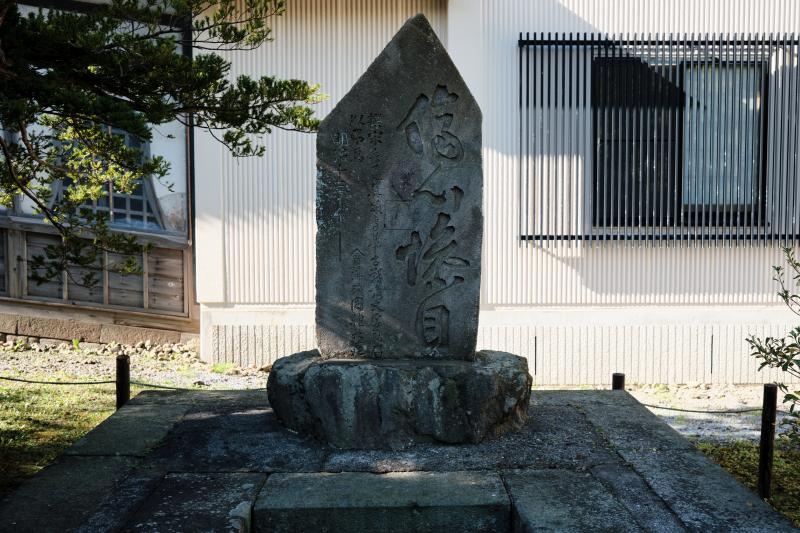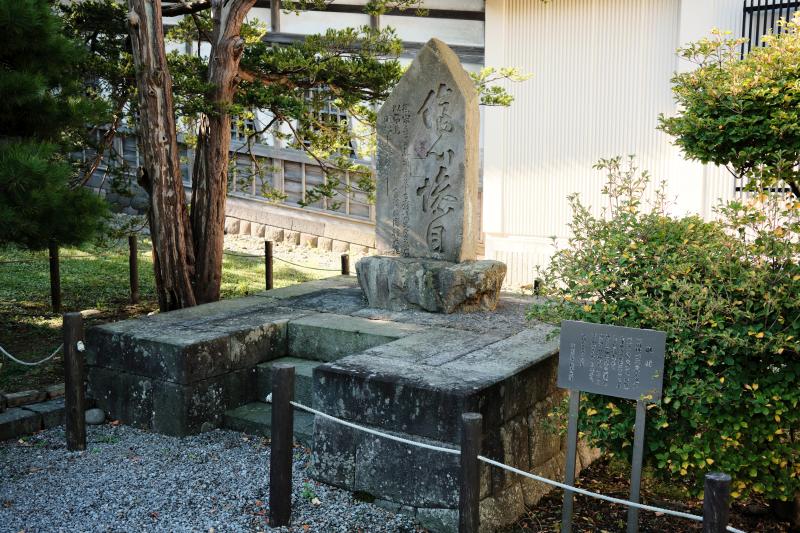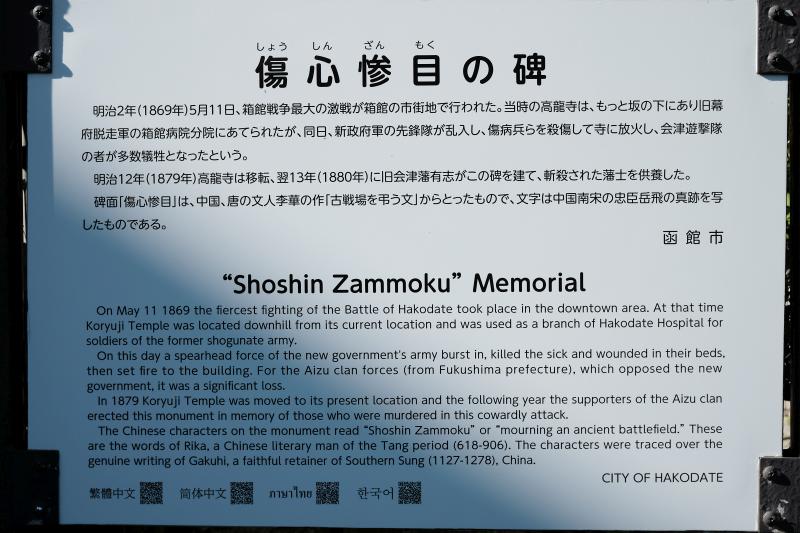


傷心惨目の碑
函館市
明治2年(1869年)5月11日、箱館戦争最大の激戦が箱館の市街地で行われた。当時の高龍寺は、もっと坂の下にあり旧幕府脱走軍の箱館病院分院にあてられたが、同日、新政府軍の先鋒隊が乱入し、傷病兵らを殺傷して寺に放火し、会津遊撃隊の者が多数犠牲となったという。
明治12年(1879年)高龍寺は移転、翌13年(1880年)に旧会津藩有志がこの碑を建て、斬殺された藩士を供養した。
碑面「傷心惨目」は、中国、唐の文人李華の作「古戦場を弔う文」からとったもので、文字は中国南宋の忠臣岳飛の真跡を写したものである。
”Shoshin Zammoku” Memorial
CITY OF HAKODATE
On May 11 1869 the fiercest fighting of the Battle of Hakodate took place in the downtown area. At that time Koryuji Temple was located downhill from its current location and was used as a branch of Hakodate Hospital for soldiers of the former shogunate army.
On this day a spearhead force of the new government’s army burst in, killed the sick and wounded in their beds, then set fire to the building. For the Aizu clan forces (from Fukushima prefecture), which opposed the new government, it was a significant loss.
In 1879 Koryuji Temple was moved to its present location and the following year the supporters of the Aizu clan erected this monument in memory of those who were murdered in this cowardly attack.
The Chinese characters on the monument read “Shoshin Zammoku” or “mourning an ancient battlefield.” These are the words of Rika, a Chinese literary man of the Tang period (618-906). The characters were traced over the genuine writing of Gakuhi, a faithful retainer of Southern Sung (1127-1278), China.



コメント